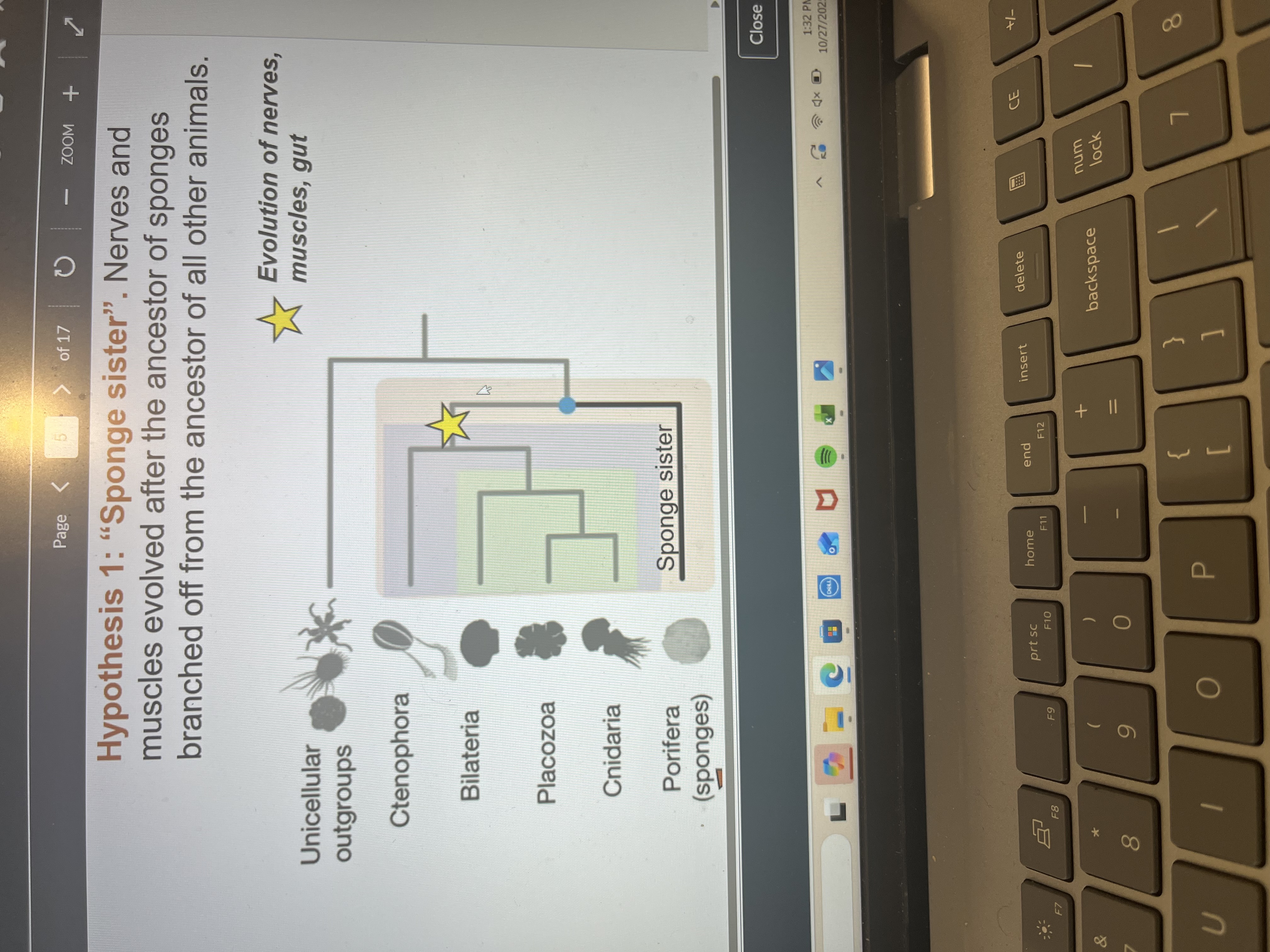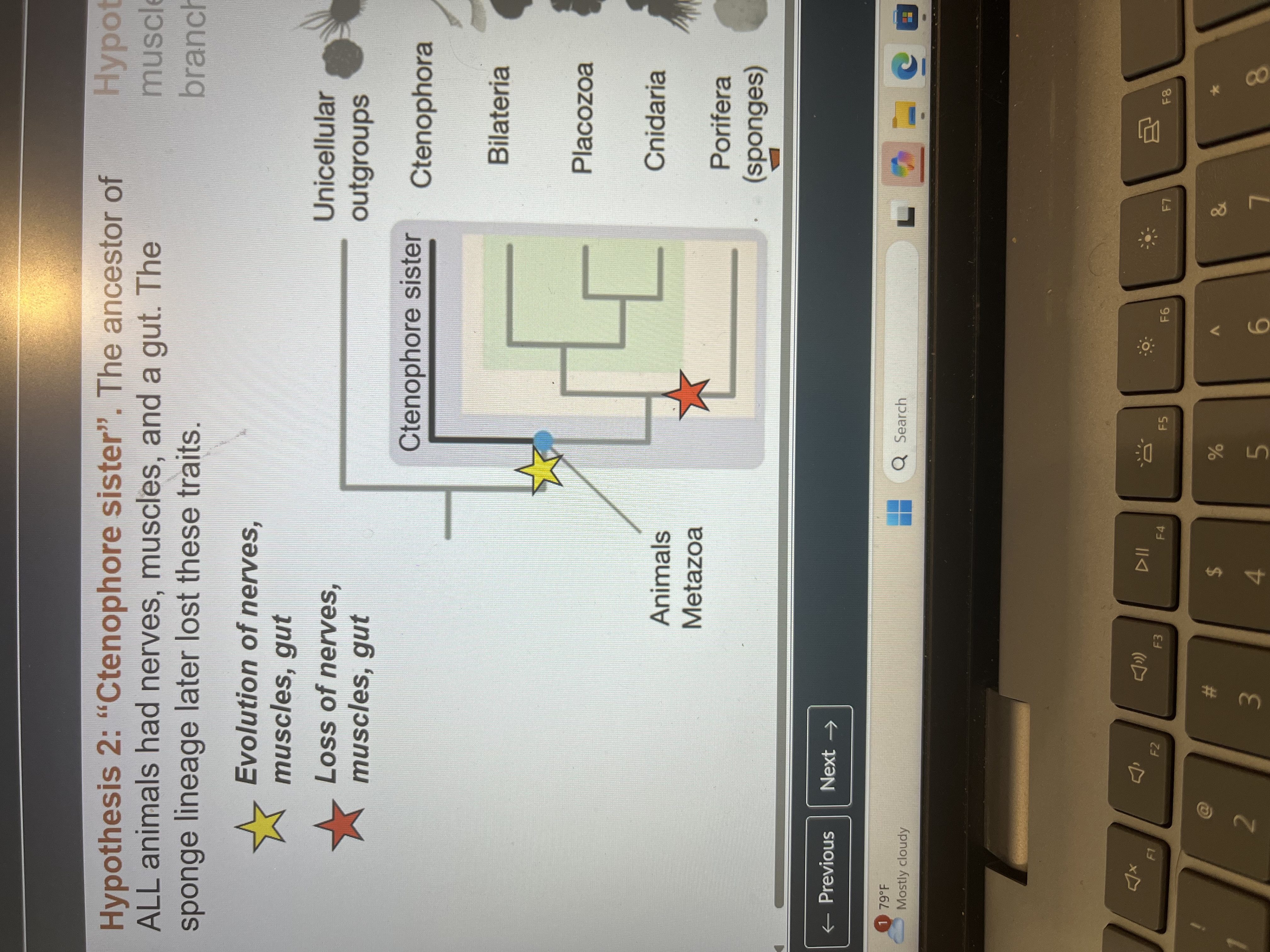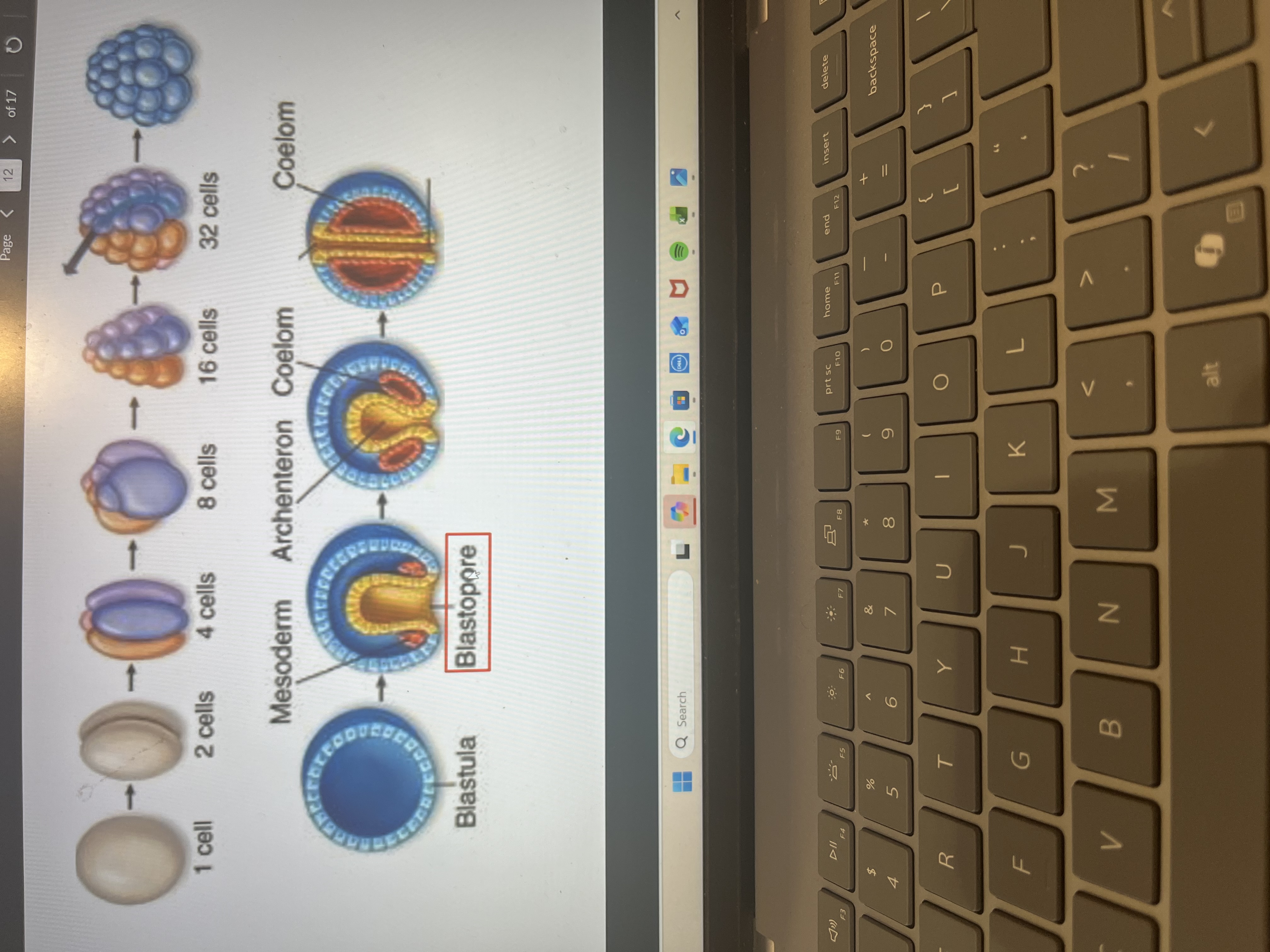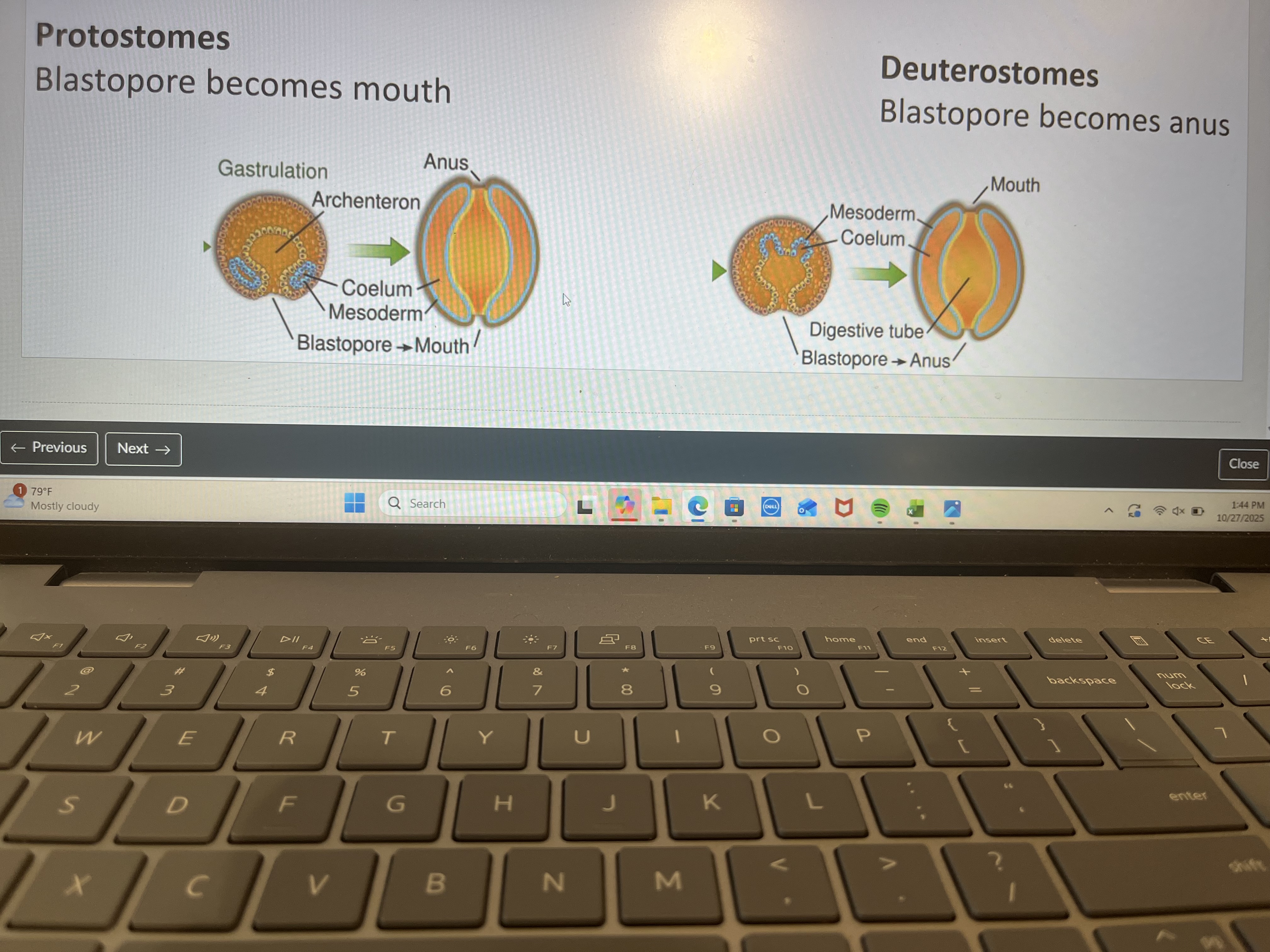animals exam2
1/14
There's no tags or description
Looks like no tags are added yet.
Name | Mastery | Learn | Test | Matching | Spaced |
|---|
No study sessions yet.
15 Terms
Mesoderm cells
Germ layers that form in development and line things.
Acoelomates: no mesoderm
Pseudocielomates: mesoderm in cavity but not organs
Coelomates: cavity and organs surrounded by mesoderm
Segmentation
No segments: nematodes
Hella segments: annelids and arthropods
Some segments: normal animals
Metamerism
Repeating body segments to generate new body plans in evolution
Imagine spine or centipedes
Nervous system
No centralized nervous system: sponge
Diffuse nervous nerve nets: cnidarians
Organized into ganglia in different body sections: arthropods
Vertebrates have a highly organized central and peripheral nervous system
Polytomy
A node on phylogeny where more than 2 lineages descent from one node.
Animals split into no nerves (sponge) nerve nets (insects and ish) and complex nerves (normal animals)
Sister Taxa to all other animals
Believed to be either sponges (no nerves muscles or gut) or ctenphores (do have nerves muscles and gut)
Sponge sister
More parsimonious
(Simpler so they like this one more)

Ctenophore sister
New data says this has more support because sponges are more similar to other animals than ctenophores (chromosomally)

Protostomes
Opening develops first into the mouth as an embryo (annelids mollusks and arthropods)
Deuterostomes
Opening first develops into butt hole (vertebrates echinodermata hemichordates etc)
Radially symmetrical animals are diploblastic (2 cell layers)
Endoderm (inner layer)
Lung cells thyroid cells digestive Cells
Ectoderm (outer layer)
Skin cells, neurons, pigments
Bilaterally symmetrical animals are triploblastic (3 cell layers)
Ectoderm (outside layer)
Endoderm (inner layer)
Mesoderm (middle layer)
Cardiac skeletal and smooth muscle
Tubule and red blood cells
Triploblast blastopore development

Diploplast vs deuterospome blastopore

Proto vs deuterostomes digestive and nerve cord
Protostomes:
Dorsal (on back) digestive tract and heart nerve cord is ventral (on belly)
Deuterostomes
Ventral digestive tract and heart dorsal nerve cord